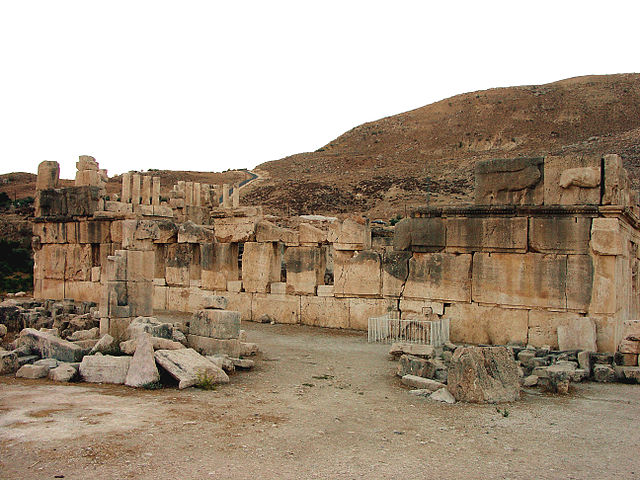
East Wall
Qasr al-Abd, Jordan
Qasr al-Abd is a rare example of Hellenistic building in the Transjordan. Perhaps intended as a pleasure palace, it was erected about 200 BC by a Tobiad notable, Hyrcanus of Jerusalem, as part of a much larger estate that is now covered by the village of Iraq al-Emir. The Qasr was originally surrounded by a large excavated reflecting pool (or moat, according to the 1st century AD Jewish historian Josephus, who considered the Qasr to be a fortress; its tentative identification as a pleasure palace is due to the contemporary Israeli archaeologist, Ehud Netzer.)
Hyrcanus took his own life in 175 BC, having come out on the wrong side of the conflict between Ptolemies and Seleucids for control of the area. The Qasr was unfinished at his death, as indicated by several incomplete carvings and columns on site. The building has two storys, and is about 125 feet long, 62 feet wide, and 40 feet high. It is located 17km (10mi) west of Amman.

